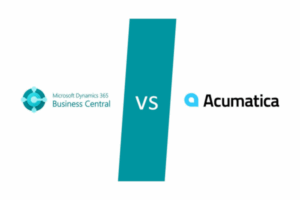Compliance Tracking Built for FDA and ISO Standards
Regulatory compliance is non-negotiable in the medical device industry. That’s why your ERP must include features that align with FDA and ISO regulations.
Look for:
- Support for 21 CFR Part 11, including electronic signatures and audit trails. This ensures that electronic records and signatures are considered trustworthy, reliable, and equivalent to paper records. A system with this support avoids compliance risks. It also reduces audit preparation time.
- Document control aligned with ISO 13485 and EU MDR standards. Your ERP should enforce strict version control and approval processes. This ensures that only the correct versions of procedures and work instructions are used on the production floor.
- Automated CAPA, NCR, and complaint tracking workflows. Corrective and preventive actions, non-conformances, and complaints should be automatically captured and tracked. This reduces the risk of human error and ensures timely resolution.
- Built-in validation support for IQ, OQ, and PQ documentation. Installation Qualification, Operational Qualification, and Performance Qualification documentation are critical for compliance. An ERP with built-in support streamlines and standardizes these validation steps.
Device History Record (DHR) and Design History File (DHF) Management
Every medical device you manufacture must have a traceable DHR and DHF. Your ERP should maintain these records digitally and automatically.
Key medical device ERP features to look for:
- Centralized storage for DHRs and DHFs. Instead of managing records across folders or disconnected systems, your ERP should centralize these documents in a secure, searchable repository.
- Automatic updates when production or design changes occur. Any changes in design or manufacturing processes should automatically reflect in the respective DHR or DHF. This helps maintain a complete audit trail.
- Document version control with secure access logs. Version control ensures that teams are always working with the latest approved documents. Secure access logs show who accessed or modified what and when.
- Instant access to records for regulators or auditors. Your ERP should allow you to generate complete, regulator-ready documentation with minimal lead time. This reduces stress and improves audit outcomes.
Full Lot and Serial Number Traceability
In medical device manufacturing, traceability isn’t optional. It’s the foundation of patient safety and compliance. You need to track every lot, serial number, and component from supplier to finished product.
Choose an ERP that supports:
- Real-time lot and serial tracking. This ensures you can trace each component and finished good by its unique identifier. That gives you end-to-end visibility throughout the supply chain.
- Backward and forward traceability. Your system should not only track the history of a specific item but also identify which customers received products containing that item.
- UDI (Unique Device Identification) integration. The ERP should support UDI compliance by generating, storing, and sharing UDI information across systems and reports.
- Recall management tools. If a product needs to be recalled, your ERP should help you quickly identify affected lots or serial numbers. It should also allow you to notify customers and regulators.
Integrated Quality Management Tools
Quality management systems (QMS) shouldn’t live outside your ERP. Integration is essential for closed-loop quality.
Your ERP should support:
- In-process and post-production inspections. These checkpoints help ensure product quality at every stage. They also reduce the risk of defective products reaching customers.
- Configurable test plans and pass/fail rules. Create and assign test procedures tailored to different products and processes. This enables consistent and objective assessments.
- Non-conformance tracking with automated workflows. When issues arise, the system should automatically initiate corrective actions. It should also track progress through resolution.
- Real-time quality dashboards for trend analysis. Dashboards provide insight into patterns and root causes. That helps you proactively improve quality and reduce defects.
Inventory and Production Control Tailored to Medical Devices
Generic inventory features don’t cut it. Medical device companies need inventory and production controls that are tightly aligned with compliance requirements.
Key medical device ERP features to prioritize:
- Lot-specific picking and expiration date tracking. Your ERP should ensure that only approved, in-date inventory is used for production or shipment. This helps maintain product integrity and compliance.
- Multi-level BOMs with revision control. For complex devices, your system must handle hierarchical bills of materials. It should also manage updates and changes over time.
- Automated reorder points that reflect safety stock and lead times. Set intelligent reorder rules that align with regulatory lead times, demand forecasts, and supplier performance.
- Work orders that include quality and documentation checkpoints. Each production step should trigger the necessary quality inspections and documentation requirements.
Validation-Ready Reporting and Document Control
Audit readiness is about more than having the data. It’s about presenting it in a way regulators expect.
Your ERP should include:
- Configurable reports that map to FDA and ISO audit formats. Pre-built templates and customizable reports should align with common regulatory expectations.
- Secure document control with approval workflows. Ensure all documents are reviewed and approved through automated workflows that meet compliance standards.
- Role-based access controls to protect sensitive data. Only authorized users should have access to critical documentation. This reduces the risk of internal errors or breaches.
- Logs that show who did what, when, and why. These audit trails are critical for investigations, internal reviews, and regulatory inspections.
Cloud Capabilities for Flexibility and Security
Modern medical device manufacturers need flexibility without compromising on security. Cloud ERP can provide both if it’s built right.
Look for:
- Cloud hosting with encrypted data and regular backups. Data should be stored securely with automatic, redundant backups. This prevents data loss and ensures disaster recovery.
- Remote access for compliance or quality teams. Enable key stakeholders to monitor operations and access documentation from anywhere. That ensures continuity and responsiveness.
- Minimal IT overhead and automatic updates. Eliminate the need for on-premises servers and enjoy regular updates that include the latest features and compliance improvements.
- Compliance with data integrity guidelines from the FDA. Your cloud provider should meet the FDA’s standards for security, integrity, and traceability in electronic systems.
Build on the Right Foundation
When you choose a system with the right medical device ERP features, you’re not just buying software. You’re creating a foundation for compliance, growth, and operational excellence.
Whether you’re preparing for FDA inspections, reducing quality costs, or scaling production, the right ERP features will help you do it confidently.
Want to learn more? Alchemy 365 offers ERP designed specifically for medical device companies. Let’s talk about what you need.
📌 Related Reading: Medical Device ERP: A Complete Handbook for Manufacturers





